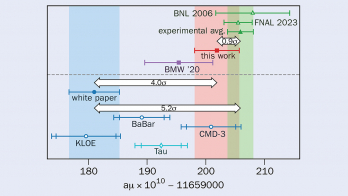By Ralph Blumenhagen, Dieter Lüst and Stefan Theisen
Springer
Hardback: £72 €84.35 $99
E-book: £56.99 €67.82 $69.95
This new textbook features an introduction to string theory, a fundamental line of research in theoretical physics during recent decades. String theory provides a framework for unifying particle physics and gravity in a coherent manner and, moreover, appears also to be consistent at the quantum level. This sets it apart from other attempts at that goal. More generally, string theory plays an important role as a generator of ideas and “toy” models in many areas of theoretical physics and mathematics; the spin-off includes the application of mathematical methods, originally motivated by and developed within string theory, to other areas. For example, string theory helps in the understanding of certain properties of gauge theories, black holes, the early universe and heavy-ion physics.

Thus any student and researcher of particle physics should have some knowledge of this important field. The book under discussion provides an excellent basis for that. It encompasses a range of essential and advanced topics, aiming at mid – to high-level students and researchers who really want to get into the subject and/or would like to look up some facts. For beginners, who just want to gain an impression of what string theory is all about, the book might be a little hefty and deterring. It really requires a serious effort to master it, and corresponds to at least a one-year course on string theory.
The book offers a refreshing mix of basic facts and up-to-date research, and avoids giving too much space to formal and relatively boring subjects such as the quantization of the bosonic string. Rather, the main focus is on the construction and properties of the various string theories in 10 dimensions and their compactifications to lower dimensions; it also includes thorough discussions of D-branes, fluxes and dualities. A particular emphasis is given to the two-dimensional world-sheet, or conformal field-theoretical point of view, which is more “stringy” than the popular supergravity approach. Filling this important gap is one of the strengths of this book, which sets it apart from other recent, similar books.
This is in line with the general focus of the book, namely the unification aspect of string theory, whose main aim is to explain, or at least describe, all known particles and interactions in one consistent framework. In recent years, additional aspects of string theory have been become increasingly popular and important lines of research, including the anti-de-Sitter/conformal-field-theory (AdS/CFT) correspondence and the quantum properties of black holes. The book barely touches on these subjects, which is wise because even the basic material would be more than would fit into the same book. For these subjects, a second volume may be in order.
All in all, this book is a perfect guide for someone with some moderate prior exposure to field and string theory, who likes to get into the principles and technical details of string model construction.








